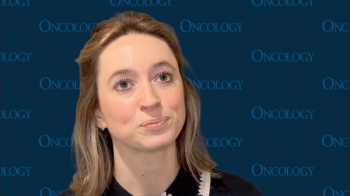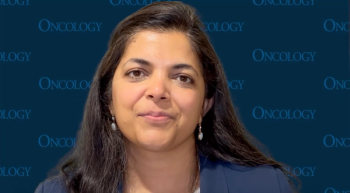
Should Patients with DLBCL and Concurrent FL be Included in Clinical Trials?
Researchers from the Mayo Clinic in Rochester, Minn. examined the disease histology and outcomes of patients with diffuse large B-cell lymphoma and a concurrent lymphoma.
Patients diagnosed with diffuse large B-cell lymphoma (DLBCL) and a concurrent lymphoma predominantly had a disease histology similar to the GCB (germinal center B-cell–like) subtype of the disease, according to a new
Additionally, outcomes for these patients were identical to those of patients with GCB DLBCL alone, reported
According to the study, between 10% and 15% of patients with newly diagnosed DLBCL will also have concurrent indolent lymphoma, such as follicular lymphoma (FL) or non-Hodgkin lymphoma (NHL), in the bone marrow.
“FL and other indolent lymphomas can undergo histological transformation into a more aggressive lymphoma such as DLBCL,” Wang and colleagues explained. “Therefore, some clinicians consider concurrent DLBCL and indolent lymphoma as early transformation of a previously undiagnosed indolent lymphoma. In contrast, other clinicians consider these cases as composite lymphoma, if the DLBCL and indolent NHL components are in the same nodal or extranodal tissue, or discordant lymphoma, if they are found in different tissue biopsies.”
In these cases, patients are typically treated for the most aggressive form of lymphoma present and are generally excluded from clinical trials. This exclusion has made it unclear what the best treatment strategy is for these cases.
In this study, Wang and colleagues looked at 1,324 patients with newly diagnosed DLBCL treated with immunochemotherapy. At diagnosis, 87.1% had DLBCL alone, and 12.9% had concurrent DLBCL and indolent NHL. Among NHLs diagnosed, the most common was FL (8.2%).
Compared with patients with DLBCL alone, those with a concurrent FL had fewer elevations of LDH (P<.01), lower IPI (P<.01), and were predominantly GCB subtype (93% vs 62%; P<.01). Those patients with DLBCL and other types of concurrent lymphoma had more late stage disease (P<.01) and a trend towards higher IPI (P=.09) and non-GCB subtype (P=.06).
The median follow-up was 6 years. Compared with DLBCL alone, those patients with DLBCL and FL had a similar event-free survival and a trend of better overall survival (P=.05).
However, those with concurrent DLBCL and other indolent lymphomas had a trend toward worse event-free survival (P=.09), but similar overall survival.
“Interpretation of these results should be made with caution as this relatively small cohort was heterogeneous in terms of histology of the indolent component in our study,” the researchers wrote.
Patients with DLBCL and concurrent FL had similar event-free survival and overall survival to those with GCB DLBCL alone. After adjustment for IPI, the two groups had “nearly identical” event-free and overall survival to those with GCB DLBCL alone.
“We recommend that DLBCL patients with concurrent FL at the time of diagnosis to be included in clinical trials of newly diagnosed DLBCL,” the researchers wrote. “The investigators should be aware though, that these patients have a treatment outcome similar to GCB DLBCL. Outside of a clinical trial, it is reasonable to treat patients with concurrent DLBCL and FL with standard immunotherapy such as R-CHOP.”
Newsletter
Stay up to date on recent advances in the multidisciplinary approach to cancer.

















































































